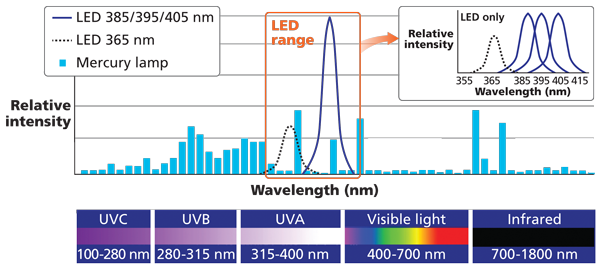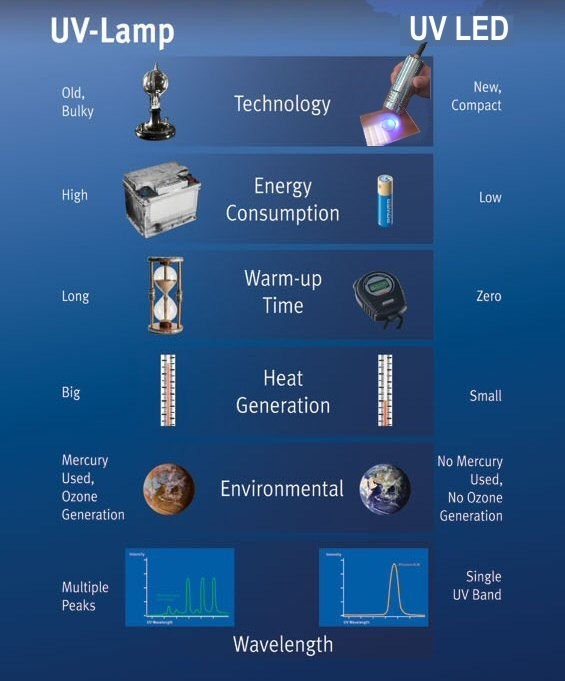VAT nr: NL140652802B01
Bank: NL140652802B01
IBAN: NL61 INGB 0006 8770 95
BIC: INGBNL2A
Ultraviolet (abbreviated UV, also known as ultra-violet radiation, black light or UV light) is electromagnetic radiation just beyond the part of the spectrum which is visible to the human eye (see also: light). The wavelength of ultraviolet radiation is between 10 and 400 nanometers, thus “beyond the violet ‘, which is also the literal meaning of’ ultraviolet ‘. Because ultraviolet light has a shorter wavelength than visible light, it is more energetic; it can even reach the ionization potential of organic molecules and thereby convert chemical reactions in motion. That is also the reason that a (an excess of) ultraviolet radiation is harmful to many organisms (including humans). In connection with the effects of ultraviolet light on man and the environment, a distinction is made between UV A, UV B and UV C UV A is ultra-violet radiation having a wavelength between about 315 and 400 nm (“long-wave”). UV B has a wavelength of between 280 and 315 nm. UV C has a wavelength of between 100 and 280 nm (“short-wave radiation”).
Radiation with a wavelength between roughly 10 and 100 nm is known as extreme ultraviolet (EUV or XUV). UV LED Lamps Commercially available for over 10 years, a UV LED generates UV energy by applying an electric current to a semiconductor device called a diode, causing it to emit UV energy. The specific materials in the diode determine the wavelength of the output, which is typically in a very narrow band +/- 10 nm.
Figure 1 compares the output of various UV LED lamps with a typical mercury arc lamp. UV LED lamps are provided in single-wave length configurations, typically centered on a specific wavelength +/- 5nm.

Typically, an array of UV LEDs are packaged into a single unit or lamp head with a power supply to provide control.
A UV LED unit can weigh as little as (0.2 kg). Their size and weight generally increases with energy output or as the emitting window size increases.
Suppliers typically specify the emitting window size and peak irradiance in W/cm2.
When comparing UV LEDs, it is important to note whether the peak irradiance given was measured at the emitting window or at some distance away since peak irradiance decreases with distance from the emitting window.
The biggest differences between conventional UV-Lamps and UV LED can be seen in this chart






